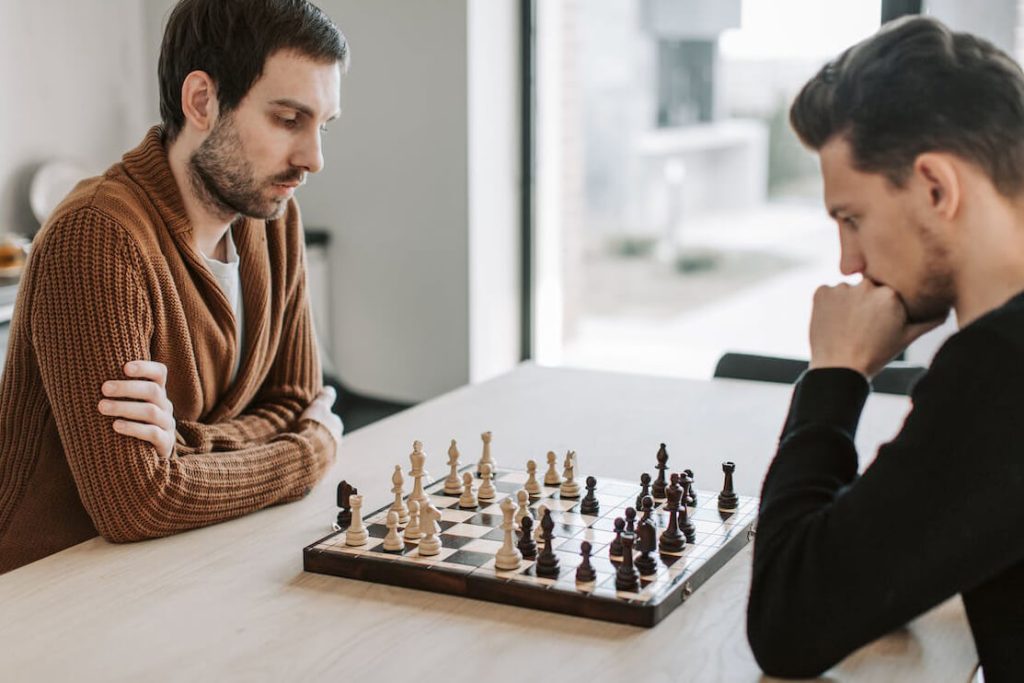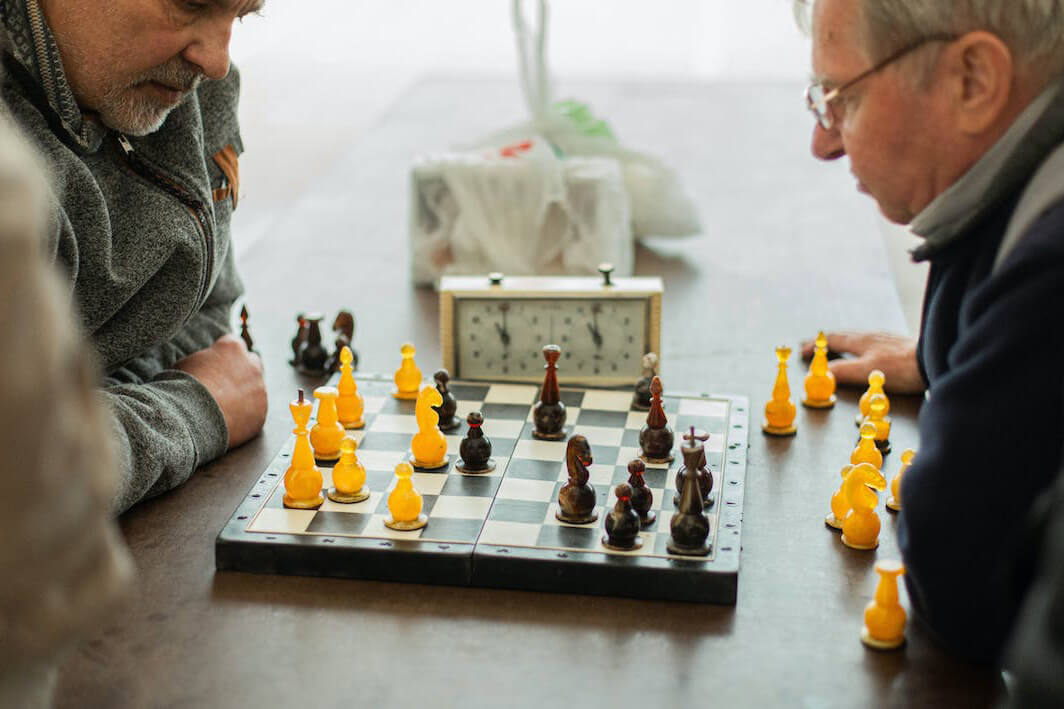No products in the cart.
Chess Rules & Instructions
Mastering Chess – Exploring Offensive and Defensive Strategies
Table of Contents
Understanding the Fundamentals of Chess Strategy
Understanding the fundamentals of chess strategy is essential for any aspiring chess player. Chess is a game of strategy, and mastering the basics of chess strategy is crucial for developing a solid foundation on which to build more advanced techniques. At its core, chess strategy involves making a plan of attack while anticipating your opponent’s next moves. A player’s strategy can focus on offense, defense, or a balance of both. Besides, one of the most important aspects of chess strategy is controlling the board. In chess, the board is divided into squares, and each piece can only move in certain ways. Understanding how to use your pieces to control certain squares on the board can give you an advantage over your opponent.
Another key aspect of chess strategy is pawn structure. Pawns are the most numerous pieces on the board, and their placement can greatly affect the game. By controlling the placement of your pawns, you can create defensive barriers or open up avenues for attack. In addition to understanding offensive and defensive strategies, a successful chess player must also be able to think ahead and anticipate their opponent’s moves. This foresight can give you an advantage in the game by allowing you to make strategic moves that your opponent did not anticipate.
Offensive Chess Strategies: Attacking Your Opponent
Offensive chess strategies involve attacking your opponent’s pieces, creating opportunities for yourself, and putting pressure on your opponent. The goal is to gain an advantage by threatening your opponent’s pieces and limiting their options. Some offensive chess strategies that can help you win the game can be as follows.
Control the center of the board
The center of the chessboard holds a crucial significance as it provides the most strategic opportunities in the game. Gaining control of the center allows for greater flexibility in launching attacks. Placing your pieces strategically in the center can apply pressure on your opponent’s pieces, creating openings for aggressive moves and tactical maneuvers to gain an advantage in the game.
Use your pawns to create space
Pawns in chess not only serve as the frontline defenders of your pieces but also possess strategic value in creating space for your other pieces to maneuver. By strategically advancing your pawns, you can open up pathways for your pieces to occupy and potentially dominate key squares on the board. It can also limit your opponent’s options, forcing them to make choices that may weaken their position or leave certain squares vulnerable. Moreover, pawn advances can be used as a means of controlling the center and dictating the pace of the game. By occupying central squares with your pawns, you can establish a strong presence in the heart of the board, which can provide a solid foundation for your future attacks or maneuvers.
Look for weak points
Analyzing the weaknesses in your opponent’s position can be a critical strategic move that can give you a significant advantage. By identifying and exploiting these weak points, you can potentially create opportunities to launch attacks or gain positional advantages. One common type of weakness to look for is poorly protected pieces. Pieces that are not adequately defended or are exposed to potential threats can be exploited by your own pieces. Another type of weakness to keep an eye out for is isolated pawns. Isolated pawns are pawns that have no neighboring pawns of the same color to support them, are vulnerable to attack, and can become weaknesses in your opponent’s position. Exploiting these isolated pawns by putting pressure on them can potentially weaken your opponent’s position and create favorable imbalances on the board.
Create pawn chains
A pawn chain is a strategic arrangement of pawns that form a line, with each pawn protecting the one in front of it. Creating a well-structured pawn chain can have several benefits in your game plan such as creating opportunities for you to launch counterattacks or initiate your own offensive maneuvers. By strategically advancing the pawns in your chain, you can potentially open up lines for your pieces to penetrate into your opponent’s territory, creating threats and putting pressure on their position. This can allow you to seize control of key squares, weaken your opponent’s pawn structure, or create tactical opportunities to win material or launch mating attacks. Furthermore, a well-structured pawn chain can also help you control important central squares on the board. Central control is crucial in chess as it provides a strong foothold for your pieces to maneuver and coordinate their attacks. By establishing a pawn chain in the center of the board, you can effectively control these critical squares and gain a strategic advantage in terms of piece mobility and coordination.
Use forks and double attacks
Two powerful tactical maneuvers that can create opportunities for capturing your opponent’s pieces or forcing them to move are the fork and double attack. A fork is a tactical move where one of your pieces attacks two of your opponent’s pieces simultaneously. This can put tremendous pressure on your opponent, as they are forced to deal with multiple threats at once. A well-executed fork can force your opponent to make difficult choices in terms of which piece to save and which to sacrifice, potentially resulting in the loss of material and weakening of their position. Similarly, a double attack is a tactical maneuver where one of your pieces attacks two of your opponent’s pieces at the same time. This can also create a dilemma for your opponent, as they must respond to both threats, often resulting in loss of material or other positional concessions. Double attacks can be particularly effective when they target key pieces or weaken your opponent’s defenses, opening up opportunities for further attacks or strategic gains.
Defensive Chess Strategies: Protecting Your Pieces
In the game of chess, defensive strategies are just as important as offensive strategies. One key aspect of defensive play is protecting your pieces. By keeping your pieces safe from capture, you can maintain control of the board and keep your opponent on the defensive. Several defensive chess strategies for protecting your pieces will be discussed as follows.
Develop your pieces quickly
One of the most effective strategies for safeguarding your pieces in the game of chess is to prioritize their rapid development. By efficiently maneuvering your pieces out of their starting positions and into more active squares, you can minimize the number of vulnerable pieces on the board and enhance their defensive capabilities. Firstly, it helps to prevent your opponent from launching successful attacks on your exposed pieces or exploiting weak squares in your position. Secondly, it allows your pieces to support each other, forming a cohesive unit that can protect and reinforce each other. Thirdly, it facilitates better piece coordination, enabling your pieces to work together harmoniously in executing your strategic plans. It typically includes moves such as developing knights and bishops to optimal squares, castling to safeguard the king, and connecting rooks for better coordination. By diligently developing your pieces early in the game, you can establish a solid foundation for your position and create a more resilient defense against your opponent’s threats.
Control the center
Controlling the central squares of the chessboard is of utmost importance as it plays a pivotal role in dictating the flow of the game. The center of the board, which includes the central four squares (d4, e4, d5, e5), is often referred to as the “heart” of the chessboard. It is considered a critical battleground where control and dominance can greatly affect the outcome of the game. Controlling the center provides a strong defensive foundation. Placing your pieces in the center allows them to protect each other, creating a formidable barrier that can deter your opponent’s attacks and provide a solid defense for your own pieces. Moreover, controlling the central squares can prevent your opponent from establishing a strong foothold in the center, limiting their ability to launch effective attacks against your pieces.
Avoid double pawns
Double pawns are a chess phenomenon that arises when two pawns of the same color occupy the same file on the chessboard. While they may initially seem advantageous, as they can control more squares and potentially support each other, double pawns can also have drawbacks that can impact your overall pawn structure and piece coordination. When pawns are doubled, they lose their ability to protect each other, leaving them more susceptible to attack from your opponent’s pieces. Additionally, double pawns can create gaps or holes in your pawn structure, providing your opponent with targets for exploitation. Due to the presence of double pawns, your pieces may struggle to find optimal squares for their placement or movement. This can hinder your ability to coordinate your pieces effectively, potentially limiting your attacking or defensive capabilities.
Create pawn chains
A pawn chain in chess refers to a formation where a row of connected pawns of the same color is lined up on adjacent files. The strength of a pawn chain lies in its ability to create a solid barrier that can deter your opponent’s advances. By having a row of connected pawns, you can create a defensive wall that can be difficult for your opponent to breach. This can effectively limit their options for piece movement and hinder their ability to penetrate your position. Furthermore, pawn chains can also control key central squares and restrict your opponent’s piece placement. By occupying the center with a pawn chain, you can establish a strong foothold and exert control over important areas of the board. This can help you dictate the flow of the game and restrict your opponent’s plans
Trade-off pieces
If you find yourself in a position where your pieces are exposed and at risk, one strategic option to consider is trading them off. The act of trading pieces can serve multiple purposes in chess. Firstly, it can eliminate potential threats to your pieces by removing them from the board. If you have pieces that are poorly positioned or under attack, exchanging them for your opponent’s pieces can alleviate the pressure and reduce the risk of losing material. Secondly, piece exchanges can help simplify the position and reduce the complexity of the game. By reducing the number of pieces on the board, you can potentially simplify the position, making it easier to assess and calculate. Furthermore, piece exchanges can also alter the pawn structure and create new opportunities for strategic maneuvers. For example, trading off chess pieces (such as knights or bishops) can result in changes in the pawn structure, which can impact the dynamics of the position and create new possibilities for advancing or undermining pawn formations.
It’s important to carefully evaluate the consequences of piece exchanges and consider the long-term implications of the resulting position. In some cases, trading off pieces may not always be the best option, especially if your pieces have strong potential or if the resulting position favors your opponent’s strategy.




